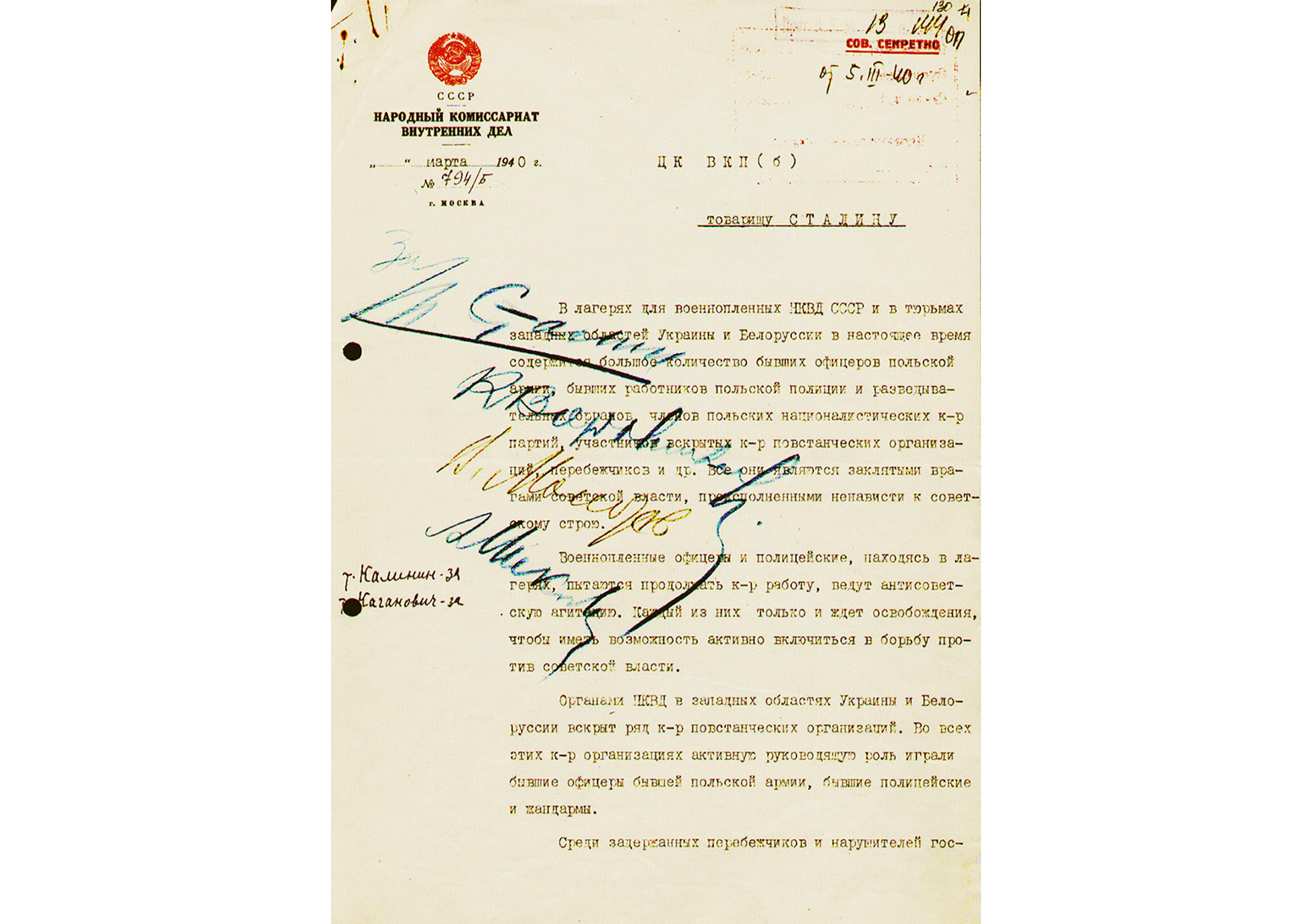On March 5, 1940, a resolution of the Central Committee of the CPSU (b) was adopted, which de facto became the legal basis for the mass murder in special camps of the NKVD of the USSR of officers of the Polish Army, civil servants of the Second Commonwealth. During April-May of the same year, at least 22,000 people were killed by NKVD personnel.
The shootings took place in different regions of the USSR: in the Kozelsky (Smolensk region of the Russian Federation), Ostashkovsky (Kalinin, now Tver region of the Russian Federation), and Starobilsky (Luhansk region of Ukraine) camps.
Prisoners of war were also killed in Soviet prisons in Kyiv, Kharkiv, Kherson, and Minsk (Belarus).
The symbol of the crime of Soviet totalitarianism was the Katyn Forest, the site of the mass shooting of Kozel camp prisoners. In 1943, the Nazis, who had controlled the area since the autumn of 1941, in the presence of representatives of the International Medical Commission, as well as British and American prisoners of war, exhumed the bodies of executed Polish citizens and informed the world about the crime. Later, the fact of the shootings was used by Nazi propaganda in the ideological struggle against the USSR. In other places of mass murder, targeted exhumations were not carried out until the end of 1991.
Even during the exhumation in 1943, the Soviet Information Bureau of the USSR issued a series of reports emphasizing that the bodies found in the Smolensk region belonged to forced laborers and prisoners of war - victims of the German Nazis.
In 1944, after regaining control over the territory of the Smolensk region, the USSR authorities created a Special State Commission headed by Academician M. Burdenko. In its conclusion, the commission claimed that the bodies of victims of Nazi terror - Soviet and Polish prisoners of war - were buried in the Katyn Forest.
For five decades, the Katyn tragedy was carefully silenced by both the USSR and the dependent communist regime of the Polish People’s Republic. Various technologies were used to camouflage the crime: from intimidation and repression of family members of the executed, to a carefully constructed technology to shift the memory of Katyn and its victims, the memory of another World War II crime - the tragedy of the Belarusian village of Khatyn (March 1943) - one of the symbols of Nazi terror against the civilian population of the occupied territories. On a personal level, memory was preserved primarily in the circle of the so-called "Katyn families" - relatives and friends of prisoners of war who were shot in 1940.
Only in April 1990 did the Soviet authorities and its last leader, President Mikhail Gorbachev, acknowledge the executions of Polish prisoners of war and civil servants. In 1992, documents from the so-called "Package № 1" were published and submitted to the authorities of the Republic of Poland. These materials testify to the direct responsibility of the USSR leadership, in particular Joseph Stalin, Vyacheslav Molotov, Atanas Mikoyan, Kliment Voroshilov and others. Subsequently, the presidents of the Russian Federation, the successors of the USSR, repeatedly publicly acknowledged the Soviet Union's responsibility for Katyn's crime.
Regarding the paradoxes of the memory of Katyn's victims, its Ukrainian dimension, as well as the political and ideological features of the museum's presentation of this topic in modern Poland and Russia, a video from Museum "Jewish Memory and Holocaust in Ukraine" will be published soon.
So, follow our announcements carefully.
The library of Museum "Jewish Memory and Holocaust in Ukraine" offers to read the publication on the history of Katyn:

